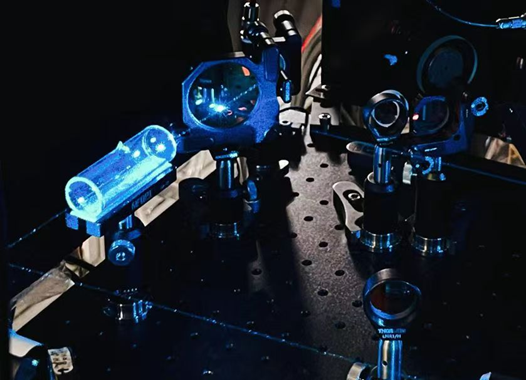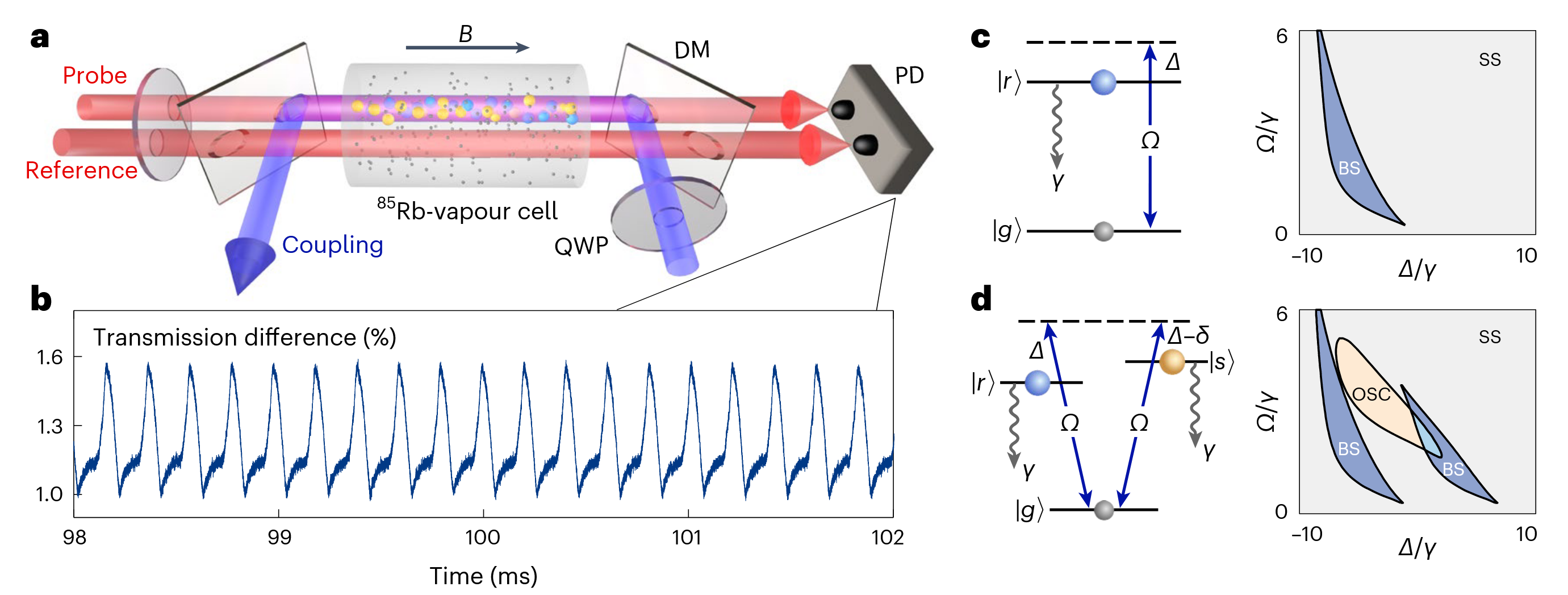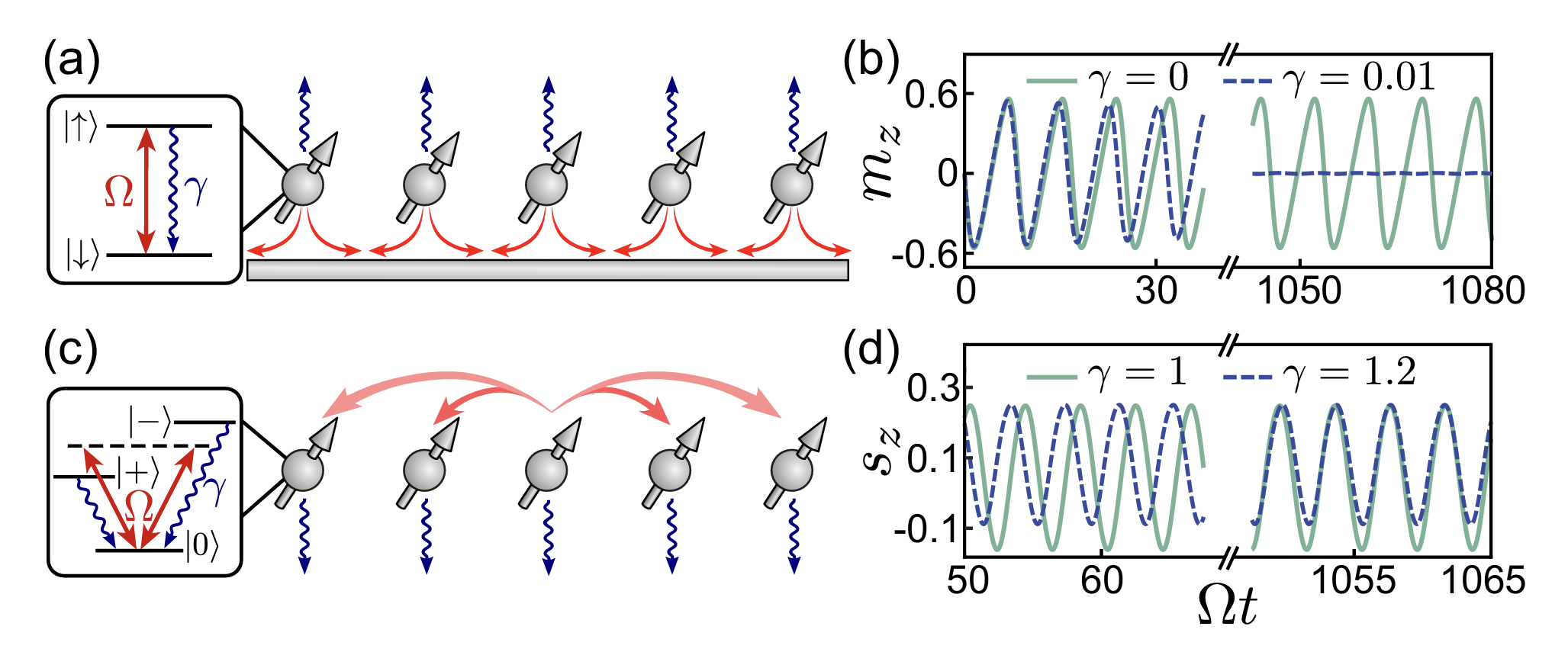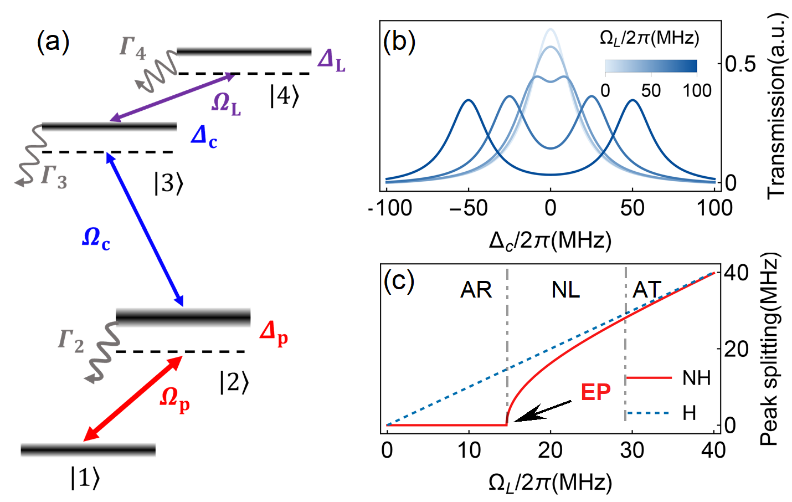


|
Nonequilibrium Dynamics with Thermal Rydberg Gases The thermal Rydberg gas serves as an excellent platform for studying nonequilibrium physics. On one hand, the finite lifetime of highly excited Rydberg atoms naturally introduces dissipation, and continuously exciting atoms into Rydberg states with lasers allows the system to exhibit both dissipation and driving simultaneously. On the other hand, the strong Rydberg-Rydberg interactions and collective processes such as superradiance give rise to pronounced nonlinear effects. Under the combined influence of thermal fluctuations, external driving fields, and environmental dissipation, thermal Rydberg gas exhibit unique nonequilibrium dynamical behavior, paving new avenues for exploring novel quantum nonequilibrium phases, such as time crystal phase. Precision Measurement with Rydberg Atoms Rydberg atoms, with their giant electric dipole moments and extreme sensitivity to external electric fields, provide a novel quantum probe for electromagnetic field measurement. By laser excitation into Rydberg states, and exploiting effects such as electromagnetically induced transparency (EIT), or Stark shifts of atomic levels, it is possible to realize highly sensitive detection of weak radio-frequency (RF) electric fields. Unlike conventional antennas, this approach features high sensitivity, broad bandwidth, intrinsic traceability, and compactness, and is regarded as a core principle for the next generation of quantum electrometry. At present, Rydberg-atom-based sensing technologies have already shown broad application prospects in precision measurement, quantum communication, radar, and navigation. |
||

|
||
Recent results |
||
|
Dissipative time crystal in a strongly interacting Rydberg gas[1] We report the experimental observation of such a dissipative time-crystalline order in a room-temperature Rydberg gas, where ground-state atoms are continuously driven to Rydberg states. The emergent time crystal is revealed by persistent oscillations of the photon transmission, and we show that the observed limit cycles arise from the coexistence and competition between distinct Rydberg components. The non-decaying autocorrelation of the oscillation, together with the robustness against temporal noises, indicates the establishment of true long-range temporal order and demonstrates the realization of a continuous time crystal. 
[1]. Xiaoling Wu*, Zhuqing Wang*, Fan Yang*, Xiangliang Li, Thomas Pohl and Li You, Nature Physics 20, 1389–1394 (2024) This work was selected for the 2024 Top Ten Social Impact Events in China's Optics (Light10). 
|
||
|
Boundary Time Crystals Induced by Local Dissipation and Long-Range Interactions[2] We demonstrate a robust BTC that is intrinsically induced by local dissipation. We provide extensive numerical evidences to support existence of the BTC and study its behaviors in different regimes. In particular, with decreasing interaction range, we identify a transition from classical limit cycles to quantum BTCs featuring sizable spatial correlations. Our studies significantly broaden the scope of nonequilibrium phases and shed new light on experimental search for dynamical quantum matter. 
[2]. Zhuqing Wang∗, Ruochen Gao∗, Xiaoling Wu, Berislav Buča, Klaus Mølmer, Li You, and Fan Yang. arXiv:2503.20761 (2025) |
||
|
Exceptional Point-Enhanced Rydberg Atomic Electrometers[3] We realize a second-order EP in a passive thermal Rydberg system and demonstrate the first EP-enhanced atomic electrometer. Near the EP, the system shows a square-root response, yielding nearly 20-fold responsivity enhancement and enabling high-sensitivity detection. We have experimentally demonstrated a MW detection sensitivity of ~20 nV/cm·Hz^(-1/2), establishing one of the most sensitive Rydberg electrometry results to date. This work establishes a practical route toward EP-enhanced quantum sensing in open atomic systems. Our future research will focus on the development of new principles and methods for ultra-sensitive detection of MW and long-wavelength electric fields, further extending the operational bandwidth and surpassing the limits of classical technologies. 
[3]. C. Liang, C. Yang, and W. Huang, Exceptional Point-Enhanced Rydberg Atomic Electrometers, arXiv:2506.12861 (2025). |